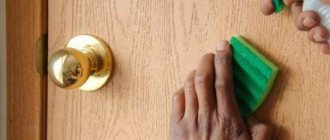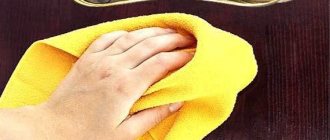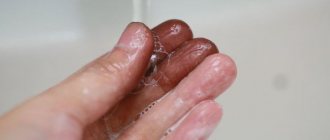Insect pest - double-tailed: YouTube / HitroUmno Double-tailed is an unpleasant insect that, when it appears in the house, harms indoor plants, spoils food, and also poses a threat to human health. If two-tailed birds have settled in your house, do not rush to panic and leave your home. Take the advice of experienced housewives and get rid of annoying insects.
Origin of the species and description
Photo: Two-tailed
This arthropod is included in the class of cryptomaxillary, uniting the most primitive creatures that lead a very secretive lifestyle, and are closely related to the soil, except for the two-tailed, this class includes the non-jawed, springtails. What these three species have in common is that their mouthparts are retracted into the head capsule, hence their name.
Video: Double-tailed
Previously, this subclass belonged to insects, but now it has been identified as a separate class. Individuals of the order Two-East are closest to insects. They are larger than other representatives of the cryptomaxillary species: protur and springtail. How hexapods developed historically is poorly understood. But one species of two-easted fish is known, dating back to the Carboniferous period - Testajapyx. The individuals had compound eyes, as well as a mouthpart similar to that of real insects, in this they are closer to them than to modern representatives of Diplura.
This species has three large groups:
- Campodeoidea;
- Japygoidea;
- Projapygoidea.
The most widespread are:
- family Campodia;
- Japix family.
Characteristics of Earwigs
If you are dealing with these insects, you should know their habits, which may help you in your fight against them.
- They are nocturnal and are predominantly nocturnal. feed on carrion and other plant materials.
- There are varieties of insects that react to lights. Common earwigs belong to this species.
- During the daytime, earwigs will be in search of shelter. They prefer to hide under pine needles, other small debris and even leaves. Preference is given to living under sidewalks, perhaps even under the foundation layer.
- They feed on plants, causing damage to the garden.
- They enter living spaces through holes and openings (cracks in doors, windows, and so on).
- If the conditions in which earwigs live are suitable for reproduction, then they can easily breed in your house underground or under the foundation quickly and efficiently, which will subsequently negatively affect the owners of the site.
- If you find woodlice in your garden plot, you will most likely find earwigs nearby, since they prefer to live next to the former.
Appearance and features
Photo: Double-tailed insect
Most representatives of the two-east are small in size, only a few millimeters (0.08-0.2 mm), but some of them reach a length of several centimeters (2-5 cm). They have no eyes or wings. The elongated fusiform body is divided into a head, a thorax with three segments, and an abdomen with ten segments. The first seven segments of the abdomen have projections called styli. The animal relies on these leg-like projections when running.
Interesting fact: The terminal segment is equipped with vestigial modified legs called cerci, they resemble antennae or double tails. It is because of them that these creatures got their name, two-tailed or fork-tailed.
In representatives of the forktail - japyxes, these outgrowths are short, hard, and claw-like. Such cerci are used to catch and hold their prey. In the Campodia family, the cerci are elongated and consist of segments. They play the role of sensitive organs and function as antennas. In the well-known species Projapygoidea, the cerci are thick, shortened, but segmented.
Such individuals also have some unique adaptations - these are abdominal rotating glands at the ends of their shortened cone-shaped tail processes. The rotating glands produce threads used to immobilize prey, as if pincers or jaws were not enough.
The three thoracic segments of hexapods are clearly distinguished, each of them has a pair of slender and long legs. The integument of the cryptomaxillaries is tender, soft and thin, so much so that breathing occurs through them. In addition, the bivost has a tracheal respiratory system and eleven pairs of spiracles. The antennae of the forktail also consist of a large number of segments: from 13 to 70 pieces, and each segment has its own muscles. For example, open-jawed animals do not have such muscles.
Is it dangerous for humans?
Earwig: why is it dangerous to humans? All the chilling stories about the insidiousness of the two-tailed bug, which can destroy a person by penetrating his ear and damaging his brain, are nothing more than fiction.
Of course, she can crawl into the ear of some summer resident if he suddenly wants to take a nap right on the ground. What happens if an earwig gets into your ear? The insect does not pose any danger to the ear and brain.
In this case, you should not panic, but, if possible, immediately consult a doctor and he will remove the unfortunate bug from the outside.
IMPORTANT! The earwig is not poisonous. It is impossible to die from its bite. An insect can only bite in defense if it suddenly sees you as a source of danger. The bite site may turn red, in which case the skin must be treated with an antiseptic.
Where does the two-tail live?
Photo: Two-tailed
Forktails are very secretive, difficult to notice, and their small size, translucency and mimic coloring contribute to this lifestyle. They live in anthills, termite mounds, and caves. They live in rotten wood, upper layers of soil, leaf litter, moss, and tree bark. You won't find them on the surface, as they love moisture.
In some countries of the world, certain species live in root crops. It has also been reported that there are representatives that are pests of crops such as sugar cane, peanuts and melons. The most common are individuals from the Campodia family. They are extremely mobile. In appearance, these are gentle and slender creatures, with long antennae and even longer cerci. Hexapods live in the soil or rotting garbage, where there is a lot of food for them: small insects and ticks, plant debris.
What is especially important to ensure conditions suitable for the life of these creatures is high humidity. At dry temperatures, the individuals themselves, their larvae and eggs dry out. But there are some subspecies that are more adapted to dry climates, which expands the known geographic range of the two-east.
Living in Crimea, on the southern shores, Japix ghilarovi is 1 cm long. The largest representative of this family, Japix dux, is found in Turkmenistan; it reaches a length of five centimeters. In the tropical forests of Africa live two-tailed birds that have features of both japyxes and campodea - Projapygoidea.
Folk methods of struggle
What means do you use to combat double-tails?
FolkChemical
The most common and widely used folk remedies are herbal infusions. They are prepared from 1 tablespoon of dry herbs and 1 liter. boiling water To combat double-tailed insects, it is better to brew tansy or wormwood. The finished product is applied with a brush to the surfaces of possible insect habitats or sprayed with a spray bottle.
An infusion of onion and garlic effectively repels earwigs from their homes. This product must be left to steep for at least 12 hours before use.
Expert opinion
Mityuk Stefania Bogdanovna
The traditional means of control is any product based on boric acid. Most often, at home, boric acid is mixed with hard-boiled chicken yolk. The product prepared in this way is shaped into balls, after which they are laid out in problem areas.
What does the two-tailed fish eat?
Photo: Double-tailed in the house
The digestive system of these creatures is very unique due to the structure of the oral apparatus. It is designed as a gnawing type and the mouthparts are directed forward, despite the fact that they are hidden in the head. The intestinal canal of the two-vost has the appearance of a simple tube.
The upper jaws are shaped like a serrated sickle and are of the grasping type. Only the very tips are visible from the outside, and the rest is hidden in recesses that have a complex shape and are called jaw pockets. The lower lip and pockets form a single unit. The upper jaws or mandibles, the mandibles, as well as the lower jaws, the maxillae, are hidden in the recesses. Japyxes, and many other species of forktails, are predators.
They feed on:
- smallest arthropod insects;
- bedbugs;
- springtails;
- springtails;
- nematodes;
- woodlice;
- centipedes;
- by his relatives, the Campodei;
- larvae.
Those forktails whose cerci are arranged in the form of claws, having grabbed the prey, arch their back so that the victim is in front of their head, then eat them. Some of the representatives are omnivores and feed on detritus, that is, the organic remains of invertebrate and vertebrate animals, particles of their secretions and undecomposed pieces of plants. Their diet also includes mushroom mycelium.
Answers to frequently asked questions
Is the earwig poisonous?
No, but her claws may have an infection that causes skin irritation and an allergic reaction.
Is it true that an earwig crawls into the ear of a sleeping person?
On purpose - no. By chance, it can get there just like any other insect.
How to get rid of insects quickly?
Treat the room with an insecticide, clean, ventilate, remove debris and dirt.
Should earwigs be exterminated?
There is almost no benefit from these insects. Yes, they eat aphids, but they are more likely to cause damage to your garden. If you have an apiary, then you need to solve the double-east problem. They love to eat honey.
I don't want to kill insects. How to simply kick two-easters out of the house?
Then use non-lethal traps (for example, with a wet rag) and folk remedies that have a strong unpleasant odor. But you must understand that in this case you will have to constantly kick the two-easter out of the house.
Features of character and lifestyle
Photo: Double-tailed insect
It is difficult to monitor forktails; they are small and very restless. Almost all the photographs that captured the creature were taken from above, but not from the side. Previously, it was believed that the outgrowths on the abdomen were simply vestigial organs.
After long-term observations and obtaining enlarged photographs, it became clear that the six-legged animals use their protruding styli on the abdomen as limbs. When moving on a horizontal surface, they hang freely. When overcoming vertical obstacles, forktails actively use them as legs. Movable campodea have sensitive cerci at the end of the abdomen, which are used for the same purposes as the antennae. They move very quickly in search of prey, feeling the way with their antennas in the cracks of the ground, feeling the slightest obstacles.
Interesting fact: Campodei can run equally well either head first or vice versa. The legs and abdomen are well adapted for moving back and forth. And the cerci on the caudal part of the abdomen successfully replace antennae.
Campodea reacts sensitively to the slightest air shocks that arise from a moving victim or enemy. If this creature encounters an obstacle or senses danger, it quickly runs away.
Interesting fact: Twintails can reach speeds of up to 54 mm/s, which is twenty-seven body lengths per second. For comparison, a cheetah runs at a speed of about 110 km/h. For a cheetah to move at the same relative speed as a forktail, it must reach 186 km/h.
How to get rid of double-east in an apartment and a private house?
If double tails appear in an apartment or country house, first of all you need to examine all pipes and valves for leaks, check the ventilation and humidity level in the room. These creatures do not live in dry and well-ventilated rooms. Therefore, the very fact of the appearance of double tails is a sign that the house is too damp.
By the way, high air humidity is also harmful for the residents themselves. And in addition to small arthropods, a fungus may appear. Taking it out is much more difficult. Therefore, establishing a normal indoor microclimate is the main way to combat pests, which will also help get rid of related problems.
To reduce air humidity, do not dry clothes in the bathroom or kitchen. If condensation accumulates on the pipes, it must be removed regularly with a dry cloth. In addition, it is important to remove all places where two-tailed insects can hide and reproduce: seal cracks with sealant, look through hard-to-reach places under furniture and household appliances. Two-tailed ducks that live in houses and apartments feed on food waste, so the trash needs to be taken out every evening and food must be carefully covered.
In order to get rid of all arthropods in the house, you can use insecticides. But you need to use chemicals carefully if a person prone to allergies lives in the room.
To destroy arthropods without putting your health at risk, you can use special glue. It is applied to cardboard or paper around the delicacy for two-easts. These could be slightly rotten or simply overripe berries, pieces of banana or apple, as well as bread crumbs. The glue is placed overnight in the places where the double-east was found. In the morning they will already stick to the paper, and all that remains is to throw it away. Naturally, before putting out the bait, you need to clean up and remove garbage, all food and crumbs from the table.
But it’s important not to forget about sticky traps. If a child or pet steps on such a surface, it will not be easy to wash off the glue. Therefore, animals should not be allowed into the room, and children should be kept under supervision.
Social structure and reproduction
Photo: Two-tailed
These primitive creatures are divided into two genders. Females and males may differ in size. Fertilization in bivosts, as in other cryptognaths, is external-internal in nature. Males lay spermatophores - capsules containing sperm. These capsules are attached to the ground by a short stem. One individual can lay up to two hundred such spermatophores per week. It is believed that their viability lasts about two days.
The female picks up spermatophores with her genital opening, and then lays fertilized eggs in cracks or depressions in the soil. Individuals emerge from the egg completely similar to adults; they have fewer outgrowths on the abdomen and no genital organs. Diplurans spend their first few days motionless and only after the first molt begin to move and forage for food.
From a larva to an adult specimen, development occurs in a direct way through molting stages, which can be about 40 times during their entire life; they live for about a year. There is evidence that some species can live for three years.
Interesting fact: It is known that campodeans leave their eggs, and japyxes remain close to the clutches, protecting the eggs and larvae from enemies.
Nutrition
These insects are unpretentious and omnivorous. Favorite foods are fruits, vegetables, plants, especially garden flowers.
They do not disdain the remains of small insects. Often, in search of food, they can crawl into a residential building, where they feed on food scraps from the table, destroy indoor plants, and can crawl into a wardrobe and damage clothes.
Earwigs do not like daylight and crawl out in search of food at night. During the day they gather in a group under the bark of trees, in the cracks of boards, under stones, preferring dark and damp shelters.
In homes they can be found in bathrooms , toilets , and basements .
Natural enemies of the two-east
Photo: Two-tailed
The lack of knowledge of these creatures and the secretive nature of their life do not allow us to fully and accurately determine the entire range of their enemies. But here we can include predatory mites, representatives of false scorpions, rove beetles, ground beetles, empid flies, and ants. Rarely, they can become prey for spiders, frogs, and snails.
Changes in macroflora also affect the population. Direct cultivation (eg plowing) has immediate harmful effects but causes little damage. Fertilizers increase the number of individuals in the soil, but herbicides have no effect on them. Some insecticides are lethal, and the increase in numbers of biworts following insecticide applications is likely due to the lethal effects of the chemicals on their enemies.
Interesting fact: Some of the bivosts can throw away their tail cerci in case of danger. These are the only arthropods that are able to regenerate a lost organ after a series of molts. Not only the cerci, but also the antennae and legs are subject to restoration.
Reasons for appearing in the home
You can meet the insect not only in private houses, but also in multi-storey buildings.
They live on the lower floors and in basements. The main reason for the appearance of insects is high indoor humidity. The likelihood of two-wests appearing in a private home is greater where there are bodies of water or swampy areas near buildings.
Sometimes the insect enters the house along with vegetables and fruits. It can be found in bunches of grapes, cabbage leaves and bunches of greens.
Insects are caused by:
- leaking water pipes;
- excessive watering of plants;
- presence of wet rags;
- cracks in the floor.











